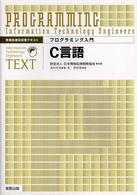Full Description
Providing a thoughtful balance of theory and practice, Nonverbal Communication: Studies and Applications, Sixth Edition, offers students an engaging, sophisticated, and up-to-date introduction to the field. Nina-Jo Moore, Mark Hickson, III, and Don W. Stacks, use examples from everyday life and television to help students understand how nonverbal communication affects the real world.
Contents
PREFACE:
ABOUT THE AUTHORS:
INTRODUCTION
1. Foundations of Nonverbal Communication
Basic Definitions
--Considerations for Definitions
Approaches to Nonverbal Communication
--Theoretical Approaches
--Disciplinary Approaches
--Methodological Approaches
Nonverbal Functions and Subcodes
--Touch and Space
--Physical Appearance
--Body Movements and Gestures
--Vocalics
--Covert Body/Temporal Communication
--Nonverbal Functions
Nonverbal Communication and Perception
--Process Structure
--Age
--Culture and Race
--Status
--Gender
--The Importance of Research in the Study of Nonverbal Communication
Summary
Questions for Thought
SECTION ONE. STUDIES AND SUBCODES
2. Haptics (Touch)
Animal Studies
Tactile Development and Humans
--Types and Functions of Touch
--Factors Influencing Touch
--Frequency of Contact
Violations of Haptic Expectations
--Substitutes for "Real Touch"
Functional Approach to Touch
Summary
Questions for Thought
3. Proxemics (Personal Space)
Proxemics
Personal Space
--Classification Schemes
--Definitions and Need
Factors Influencing Distancing Expectations
--Age Differences
--Sex Differences
--Cultural Differences
--Racial Differences
--Status, Personality, and Liking
--Environmental Structuring
Violations of Personal Space
Other Violations
Functions of Personal Space
Summary
Questions for Thought
4. Proxemics (Territory and Environment)
Territory
--Animal Correlates of Territoriality
--Human Correlates of Territoriality
--Territorial Claims
--Purposes of Territory
Environment
--Room Color and Aesthetic Appreciation
--Room Size and Shape
--Temperature and Humidity
--Environmental Structuring
--Architecture
Functions of Territory and the Environment
Summary
Questions for Thought
5. Physical Appearance: Impressions of the Body
Physical Attractiveness
--Social Interaction
--Sex Appeal
The Body
--Body Shape
--Weight and Attitude
--Body Image
Stigmas
Functions
Summary
Questions for Thought
6. Body Alterations and Coverings
Body Alterations
--Hair and Hairstyles
--The Skin: Cosmetics and Colorings
--Additions
--Tattoos, Body Piercing, and Branding
Clothing
--Purposes of Clothing
--Functions of Clothing
--Clothing and Success
--Accessories
Functions
Summary
Questions for Thought
7. Kinesics: The Study of Human Body Movements
Principles
--Putting Principles to Work
--Categories in Kinesics
--Birdwhistell's Linguistic Analogy
--Morris' Derivation System
--Mehrabian's Functional Approach
--Ekman and Friesen's Cumulative Structure
Functions
Summary
Questions for Thought
8. A Practical Functional Approach to Kinesics
Variables that Influence Kinesics
--Culture
--Sex/Gender
--Left- and Right-Handedness
--Relationship with Language
--Decoding
Functions
--Identification and Self-Presentation
--Control of the Interaction
--Relationship of Interactants
--Display of Cognitive Information
--Display of Affective Information
--Deception and Leakage
Summary
Questions for Thought
9. Vocalics (Paralanguage)
Definitions
Sound and Its Attributes
Paravocal Communication
Vocalic Functions
--The "Normal" Conversation
--Identification and Self-Presentation
--Controlling Interaction
--Regulating the Conversation
--Relationship of Interactants
--Display of Cognitive Information
--Display of Affective Information
--Deception
--Other Encoding and Decoding Aspects of Vocalics
Summary
Questions for Thought
10. The Covert Subcodes: Biofeedback, Olfaction, and Chronemics
Feedback Systems
--Gustatory Systems
--Biofeedback Systems
--Mood and Emotion
Olfaction
--What Is Olfaction?
--Olfactory Processes
--Olfactory Identification
--Olfactory Influence
--Olfactory Memory
Time (Chronemics)
--The Structure of Time
--Bruneau's Chronemic Structures
--Culture and Time
Summary
Questions for Thought
SECTION TWO. APPLICATIONS
11. Nonverbal Communication in Social Situations
Meeting Others
--General Characteristics
--Intimate Behavior
--Environment, Proxemics, Chronemics
--Computer Mediated Relationship Building
Cross-Sex Friendships
Same-Sex Relationships
--Male-Male Nonverbal Communication
--Female-Female Nonverbal Communication
Summary
Questions for Thought
12. Nonverbal Communication in the Family
The Home
--Spatiotemporal Dimensions
--Kinesic Factors
--Vocalic Factors
--Physical Appearance
--Review
Nonverbal Communication in the Marriage and Committed Relationships
--Environmental Factors
--Space
--Touch
--Kinesics and Vocalics
--Chronemics
--Physical Appearance
The Expanding Family--Children and the Family Relationship
--Nonverbal Communication in Children
Nonverbal Communication with the Elderly
--Environment and Space
--Touch
--Vocalics
--Physical Appearance
--Kinesics
--Chronemics and Olfaction
--Review
Summary
Questions for Thought
13. Nonverbal Communication at Work
Nonverbal Relational Messages
General Nonverbal Considerations
--Spatiotemporal Dimensions
--Overt Body Dimensions
--Physical Appearance
--Impression Management
--Review
The Performance Appraisal Interview
Nonverbal Interaction in Particular Professions
--The Teacher in the Classroom
--The Attorney in Court
--The Health Care Industry
--The Business Person in a Leadership Position
Summary
Questions for Thought
14. The Future of Nonverbal Communication: A Review
What We Know About Nonverbal Communication
Where Is the Study of Nonverbal Communication Going?
General Review
APPENDIX. Methods of Nonverbal Communication Research
Nonverbal Research
--Review of the Literature
--Theoretical Perspective
--Methodology
--Data Collection
--Data Analysis and Application
Limitations of Nonverbal Communication Research
An Example of Context
Summary
Questions for Thought
GLOSSARY:
REFERENCES:
AUTHOR INDEX:
SUBJECT INDEX:
















